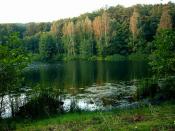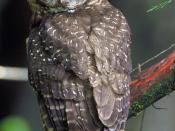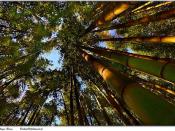Old growth forests in the Northwest have fallen victim to the activities of human beings. Companies are replacing these vital forests with plantations or second-growth forests, resulting in the disruption of the vital network of harmonious relationships that sustain the intricate old-growth forest communities. Many people are oblivious to the fact that these forests are essential to our planet. Not only do they provide homes for many wildlife species, but they also accumulate biomass more efficiently than any other ecosystem on Earth, are responsible for the majority of recycled nutrients in the forest ecosystem and play a significant role in the protection against fires and floods and recharging of proximate streams and aquifers. It is proven that the destruction of these forests has had a severe ripple effect nationwide.
In addition to old-growth deforestation having a tremendous effect on our environment, it also affects our daily lives. For example, the region's salmon stocks are dependent on the survival of these forests.
If they were destroyed, sixty-two thousand people would be without a job. The damming of rivers, pollution and over fishing are all involved in the decline of these forests. The sediment deposited in streams would smother the spawning beds and disrupt the feeding patterns of young salmon. It is evident that the disruption of these forests will have a wide-spread effect on our nation and it is up to us to protect and prevent any further harm to these crucial forests.
The forests provide a home for many species. The northern spotted owl finds its home in the 200-year-old Douglas fir forests of the northwest, and has now been forced to live in seventeen reserved national forests and five Bureaus of land management divisions. This sudden removal of the spotted owl's habitat, taking into account their low reproductive and...


